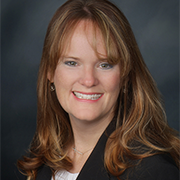Effectively managing a 401(k) plan is a significant responsibility for employers, not only to benefit their employees but also to comply with regulatory requirements. One critical aspect of this responsibility is ensuring that all participant disclosures are properly communicated. Here’s what employers need to know about 401(k) participant disclosures.
Key Disclosures Required
- Summary Plan Description (SPD): The SPD is the primary document that describes the plan’s provisions, including eligibility requirements, benefits, participant rights, and the plan’s claims and appeals process. It must be provided within 90 days of an employee becoming a plan participant or within 120 days of the plan becoming subject to ERISA.
- Summary of Material Modifications (SMM): Whenever the plan undergoes significant changes, such as amendments or modifications, participants must receive an SMM within 210 days after the end of the plan year in which the change was made.
- Summary Annual Report (SAR): The SAR is a summary of the plan’s financial status, including information from the plan’s annual report (Form 5500). This must be furnished to participants within nine months after the end of the plan year or two months after Form 5500 is filed.
- Individual Benefit Statements: These statements provide participants with information on their account balances and vested benefits. Participants should receive these statements quarterly if their plan allows for participant-directed investments or annually otherwise.
- Fee Disclosures: Employers must disclose information about the 401(k) plan fees, including plan administration fees, individual service fees, and investment fees. These disclosures must be provided annually, with any changes communicated at least 30 days in advance.
Timing and Delivery Requirements
The timing and method of delivering these disclosures are critical. Employers can distribute disclosures electronically if participants can effectively access them and are notified of their significance. However, paper disclosures must be provided for those without electronic access.
Best Practices for Compliance
- Develop a Disclosure Calendar. A calendar outlining when each disclosure must be provided can help ensure timely distribution. Using a disclosure calendar reduces the risk of missing deadlines and helps maintain regulatory compliance.
- Use Clear and Understandable Language. Disclosures should be written in plain language to ensure participants can easily understand the information. Avoiding technical jargon can improve comprehension and participant engagement.
- Maintain Accurate Records. Keeping detailed records of all disclosures and their distribution dates is essential. This documentation can be crucial if the plan is audited or disputes arise.
- Regularly Review and Update Procedures. Laws and regulations can change, so it’s important for employers to review their disclosure procedures and update them as necessary. Staying informed about regulatory changes can help avoid compliance issues.
Proper management of 401(k) participant disclosures is crucial for both regulatory compliance and participant satisfaction. Partnering with a qualified 401(k) provider can help employers navigate requirements and avoid penalties. Yeo & Yeo CPAs & Advisors can help. Get in touch.
Source: https://www.employeefiduciary.com/blog/401k-participant-disclosures-what-employers-need-to-know

